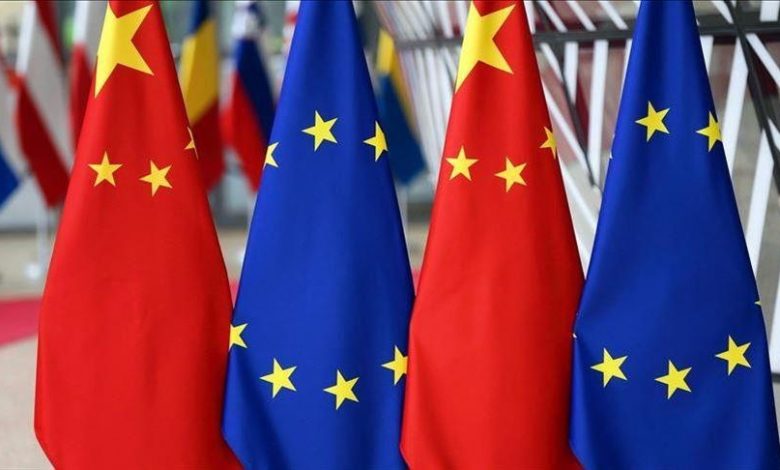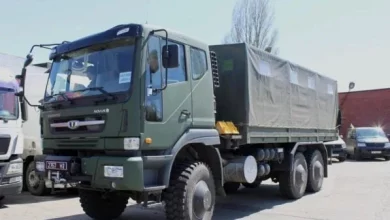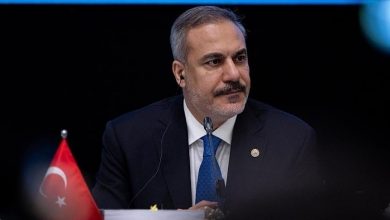Analysis: Emerging potential of the Middle Corridor

Growing disruption of the Northern Corridor leads to a new discussion about potential alternative routes between China and the EU, particularly in the context of the Middle Corridor
Since the beginning of the Russia-Ukraine war, growing sanctions on Russia and Belarus also affect China-EU land-based trade relations.
China’s Belt and Road Initiative’s (BRI) Northern Corridor is the main route for Sino-EU rail freight trade relations. In terms of the cost per twenty-foot equivalent unit (TEU) and the arrival time of cargos to the destination, it has an advantage compared to the other corridors.
In terms of westbound traffic, the Northern Corridor share in 2020 was 79% of total inbound cargo and still had a high share of 68% in 2021. It was 90% and 82%, respectively, for eastbound traffic in the last two years.
The sanctions’ impact on Russia as a transit country
Despite the fact that Russian Railways is on the EU and US sanctions lists, there is still the potential of conducting business with the company. However, sanctions on the banking sector and growing uncertainty in Russia’s domestic policy would affect foreign companies’ decisions. They may promote stopping the use of Russia as the leading transit country. For example, Zyxel Communications Corp’s decision to stop shipping from China to Europe by rail and BMW Group Audi’s decision to suspend shipments of cars by rail from Germany to China are the main examples that reflect international companies’ considerations. Furthermore, the stranding of 150,000 wagons and remaining inactive on the Russian railway network due to the Russian invasion of Ukraine and sanctions shows that in the short and medium terms war may affect China’s land-based connectivity with the EU negatively.
Alternative routes on the way
Growing disruption of the Northern Corridor leads to a new discussion about potential alternative routes between China and the EU, particularly in the context of the Middle Corridor. For instance, due to the instability in the Northern Corridor, Gebrüder Weisss, one of the world’s oldest logistics companies, has decided to expand its presence in Turkiye, and a new agreement between Finnish logistics company Nurminen Logistics and Kazakhstan Railways for commercializing the Middle Corridor shows that there is growing interest in the corridor. New advancements in both hard and soft infrastructure, during the conflict, brought foreign corporations’ interest to the corridor.
In terms of hard infrastructure, firstly, decision to construct new railway which bypass Dostyk/Alashankou border crossing and run through Almaty on the southeast border of Kazakhstan, is especially important because new line will reduce congestion problem in borderland and strengthen efficiency throughout the corridor.
Secondly, the deal about starting the operation of two new vessels across the Caspian Sea between the Caspian Shipping Company CJSC (ASCO), Baku International Sea Trade Port CJSC and Turkmenbashi International Sea Port is another significant development. Because crossing the Caspian Sea is a significant bottleneck as ferry and port services are insufficient to balance rail capacity on both sides. With this new deal, there is a chance to decrease the bottleneck problem and increase the volume of carrying cargo.
Finally, by the help of the Asia Development Bank (ADB) support program, the average time of freight traffic between the border of Azerbaijan and Georgia’s Batumi Port will be reduced by 4 hours. Moreover, networks annual freight capacity will increase from 27 million tons to 48 million tons by 2024. Growing capacity is important factor because it will help to attract more cargo from Northern Corridor and boost corridor efficiency.
Soft infrastructure and ‘Eurasian Rail Alliance’
In addition to hard infrastructure, there are also new developments in soft infrastructure. Improvement of soft infrastructure plays a critical role in reducing cost and time consuming for railway trade across countries. Firstly, applying a new electronic queue system to Kazakhstan’s Nur-Zholy border point is important for developing soft infrastructure. This system can reduce both formal and informal costs of cargos, curb customs corruption, and ensure transparency at the border.
The second and most significant development is a joint venture between Georgia, Azerbaijan, Turkiye, and Kazakhstan to create the “Eurasian Rail Alliance”. Joint ventures can play a crucial role in unifying regulation, reducing tariffs, and promoting high-quality intermodal transportation.
Growing capacity of the Middle Corridor
Development of both hard and soft infrastructure promotes more cargo transfer from Northern Corridor to Middle Corridor because reducing tariffs, unifying regulations, an extension of the rail line and ferry service affects foreign companies’ decision and increases the attractiveness of the corridor in terms of cost and time-consuming. Although Middle Corridor only accounts for 3-5% of the total cargo volumes moving between China and Europe, there is already an expectation that about 10% of cargo will transport through the corridor because of disruption in the Northern Corridor.
To conclude, despite the Middle Corridor’s limited capacity to replace the Northern Corridor for Sino-EU land-based commercial connections, recent developments suggest that the corridor has a number of potentials to attract more cargo and reduce supply chain disruption in the short and medium term. In the longer term, clear strategies such as the ‘Transport Vision 2053’ and the “Middle Corridor Initiative” can foster coordination between countries at bilateral and multilateral levels to develop soft and hard infrastructure. As a result, further cooperation could create a chance for corridor countries to attract up to around 22-30% of cargo volumes between China and the EU.
* Opinions expressed in this article are the author’s own and do not necessarily reflect the editorial policy of Anadolu Agency.





